It has been a little over two months since I moved to Louisville, KY, to begin the PhD program in Humanities at the University of Louisville. It has been an adjustment, though not as extreme as might have been expected. Several things have actually remained constant. There is still weather, albeit slightly more moist and humid than Utah (one recent weekend it rained about six inches, which equals half of Utah's yearly rainfall). This also means that things are greener than at homes. Roads still get me from one place to another, though I have had to learn a new city layout. Most major retailers, book stores and fast food chains exist here, meaning my shopping habits have not altered greatly. Despite the lack of familiar landmarks, there is nothing really out of the ordinary.
Except the squirrels. They are everywhere.
Starting a PhD program may have seemed like a challenging transition as it has been a few years since I received my master's. But as I spent the intervening years working at the BYU Bookstore as well as writing and presenting papers, it has really been moving from one academic environment to another. I have realized that, while I am fine researching and writing, I am not a fast writer, which may become an issue towards the end of the semester. Not looking forward to all the papers I will have to write.
All in all, I feel that transition to a new location and life have gone smoothly. But I am only in the first semester of the program; a program which is going to be undergoing several changes in the coming years. Who knows what will happen in the future. Whatever happens, it will definitely be challenging, hopefully exciting, and at the very least, I will have learned something.
Tuesday, October 22, 2013
Sunday, July 28, 2013
How to Train Your Dragon 9 and 10

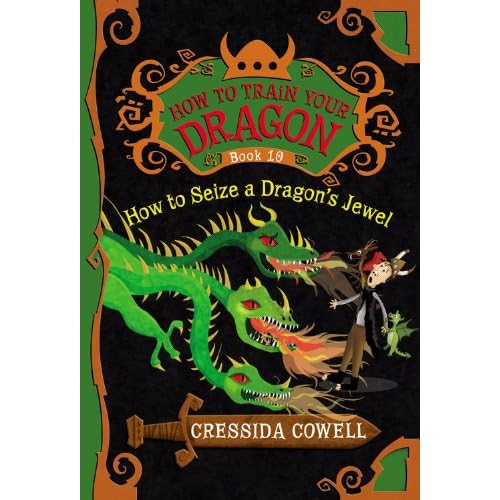
Book 9: How to Steal a
Dragon’s Sword
4 ½ out of 5 Covers
Book 10: How to Seize
a Dragon’s Jewel
4 ½ out of 5 Covers
At this point, I really could be reviewing each book
individually, as they have gotten longer and more complex. But for the sake of tradition, I am going to
continue with the two book format. As
things are definitely building towards a finale, it will be hard to talk about
things without a few spoilers. So there
are going to be revelation ahead.
In Book 8, Hiccup freed a dragon that had been friends with
his ancestor, Hiccup II. But this dragon
had also been tormented for the last hundred years and has begun a dragon
rebellion, bent on freeing all the dragons that have been enslaved and wiping
out all the Vikings, but particularly Hiccup.
To combat this, all the Vikings tribes are meeting at the
School of Swordfighting, here boys become men.
But this time, they will also decide on a leader to guide them through
the perilous events. Things are not all
that it seems at the school, though, as it has been taken over by Alvin and his
witch mother, who have a plot to make Alvin the king. But the king has to be able to find all of
Grimbeard the Ghastly’s lost treasures, something that Hiccup has a knack
for. And there is one treasure located
beneath the school.
Book 10 begins with Hiccup at his lowest point: alone and
hunted while his friends and tribe are enslaved. Then his mother attacks him. This is the first appearance of Vahallarama,
who has been out on quests for most of Hiccup’s life. Barely surviving, Hiccup then has to sneak
into the Slavelands to find another of Grimbeard’s lost treasures if he is to
have any hope of creating peace between the dragons and Vikings. Things do go from bad to worse, though there
is a surprise revelation the origin of Hiccup’s friend, Fishlegs. And events take a dramatic turn when Hiccup
confronts Alvin the Treacherous.
In both these books, the first two thirds are filled with
the usual dose of action and preposterous physics. But the last thirds are dramatic with
heartwrenching choices because the character’s decisions now have
consequences. The first half of the How to Train Your Dragon series was
typical of middle reader fare, with silly action and everything being restored
to normal by the end of the book. But in
the second half, character’s actions have long lasting effects on the
future. And this has really elevated the
series towards exceptional and makes this reader very excited for the
conclusion, however many more volumes that may take.
Saturday, July 27, 2013
The Rope Trick
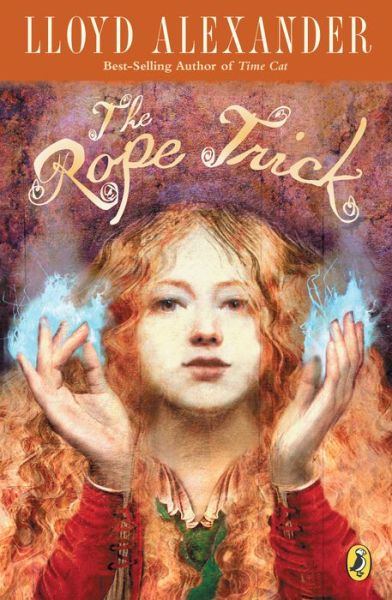
3 out of 5 stars
Lidi is a brilliant magician, but she has yet to master one
trick: the rope trick. And there is only
one person in the world who can teach her it: the elusive, legendary
Ferramondo. As she travels across a
medieval Italian countryside, she meets many new friends to help and hinder her
on her way: Daniella, an orphan girl who can tell the future; Julian, a
handsome outlaw; a troupe of dancing pigs.
But when the evil baron who made Julian an outlaw kidnaps Daniella,
their journey takes on new priorities.
As with many of Alexander’s works, there is an episodic
nature to the story, aided by the fact that as a travelling magician Lidi can
be in a different town every night. But
there is also a real strength of each adventure building on the previous,
growing to a climax and creating an enjoyable whole.
The characters are lively.
Each episode has new and different challenges so the story is always
fresh. As this was Alexander’s last book before his passing, one would think he
was still at the top of his game.
And then there was the ending. Everything was progressing nicely through the
climax and then the dénouement came out of left field. I do not know what happened. I mean that literally. I don’t know what was going on in that last
chapter. I have some theories, but it
was completely unexpected and not explained clearly. As such, it soured the reading experience.
Thursday, July 25, 2013
Curse of a Winter Moon
By Mary Casanova
2 ½ out of 5 covers
For a book that portends to be about werewolves, there is
very little supernatural activity in the story.
Instead, the reader receives a history lesson about the culture of fear
and superstition in France in the year 1553.
Marius, the son of a blacksmith, had promised his departed
mother that he would always take care of his younger brother, Jean-Pierre. This is complicated by the fact that
Jean-Pierre’s birthday, Christmas Eve, is also viewed as a time when loup-garou
(werewolves) go on the hunt. But that is
not the only danger, as the Church is hunting heretics. Despite having an uncle who is a priest,
Marius’s family has a secret that puts them in grave danger.
I have a problem with stories that are didactic in
nature. It’s not that they are trying to
fool me into learning; rather, it’s that their primary purpose is education and
telling a story is secondary. There are
fine examples of authors who are able to do both with aplomb, and the author here
makes a valiant effort. But in trying to
show what everything like at the time, you end up with the main character at
the center of an unlikely web of connections just so that all aspects of
society can be covered. Marius ends up
mixed up with peasants, the Church, royalty, superstition, etc. With this comes a sense that the descriptions
show how things were done back then. But
instead of the story being a doorway to the past, they often become history
lessons.
Because the book is driven to be informative, the author
ends up with a protagonist who is much more reactionary than active. A great protagonist should be in charge of
their own destiny, able to make decisions but then have to deal with the
consequences. Here, Marius has consequences heaped on him through other peoples’
actions and he is unable to do anything to break free. If this was Kafka-esque, it might work; but
this is a book for children. A didactic
purpose and a passive protagonist is not a winning formula.
Wednesday, July 24, 2013
How to Train Your Dragon Books 7 and 8
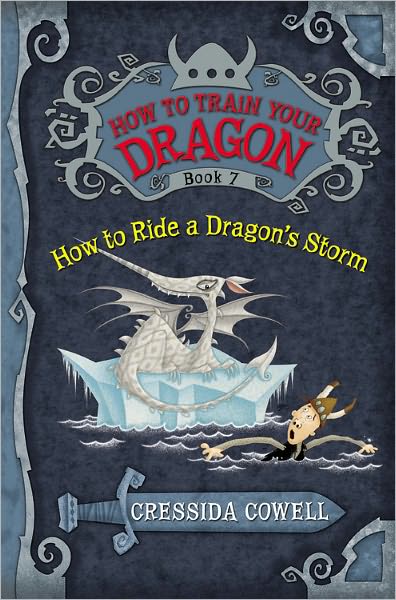
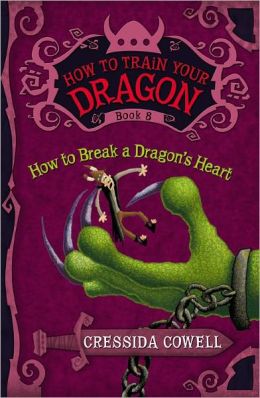
Book 7: How to Ride a Dragon’s Storm
3 ½ out of 5 Covers
Book 8: How to Break a Dragon’s Heart
5 out of 5 Covers
The adventures of
Hiccup the Viking continue as he competes in the Intertribal Friendly Swimming
Race. Now Vikings don’t race to see how fast
they can swim, oh no. Coming from an
arctic region, they compete to see how long you can stay in the water. Which is why Hiccup has 3 months, 5 days and
6 hours to make it back. It doesn’t help
that Hiccup is captured by his nemesis Norbert the Nutjob, hunted by
Polar-Serpents, nearly discovers America and has to free Norbert’s slaves.
While the logic behind
the Viking swimming race makes sense within the world that the author has
built, it also strains credulity. While
this series has always required a strong illusion of disbelief, the initial
presentation of the idea of swimming for months is a stretch of physics that
weakens the underlying premise of the volume.
Sadly, it is not the only plot element that felt forced, though
revealing more would give away some crucial developments. Having read further volumes, I know that the
developments are crucial to future books, but here there is a sense that the
author needed it to happen and didn’t quite know how to fit it into the
narrative.
How to Break a Dragon’s Heart is the best book in the series so
far. Everything else has been laying the
groundwork for this story, which begins with Hiccup’s discovery of the Lost
Throne of the Wilderwest, last occupied by his ancestor Grimbeard the Ghastly. From there the story leads to the island of
Berserkers, where Hiccup’s friend Fishlegs believes he will find his
parents. Hiccup must survive the
Berserkers, free his friends and free an ancient dragon that was friends with
his namesake, Hiccup II. Unfortunately,
this dragon now hates Vikings and wants to start a war.
The centerpiece of this
volume, the part that helps it rise about excellent to exceptional, is the
prophecy. Many heroes’ stories have prophecies
and it helps raise them from fun stories to legends, being now wrapped up in
the history and mythology of the land.
In Hiccup’s case, the prophecy includes a terrible decision, for will
have to choose between saving the Vikings or saving the dragons in the upcoming
war. I cannot stress what a great affect
these revelations had as it changes the whole dynamic of the series and puts
everything that came before in a much greater context. Fantastic stuff.
Monday, July 15, 2013
Dragon Slayers Academy

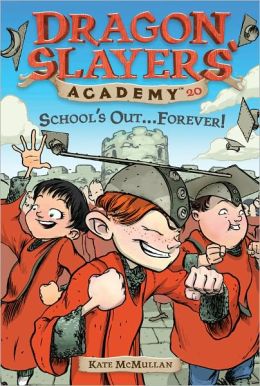
#1 The New Kid at School
#2 Revenge of the
Dragon Lady
#3 Class Trip to the
Cave of Doom
#4 A Wedding for
Wiglaf?
#5 Knight for a Day
#6 Sir Lancelot, Where
Are You?
#7 Wheel of Misfortune
#8 Countdown to the
Year 1000
#9 97 Ways to Train a
Dragon
#10 Help! It’s Parents
Day at DSA
#11 Danger! Wizard at
Work
#12 The Ghost of Sir Herbert Dungeonstone
#13 Beware! It’s Friday
the 13th
#14 Pig Latin—Not Just
for Pigs!
#15 Double Dragon
Trouble
#16 World’s Oldest
Living Dragon
#17 Hail! Hail! Camp
Dragononka!
#18 Never Trust a
Troll!
#19 Little Giant—Big
Trouble
#20 School’s
Out…Forever!
By Kate McMullan
4 out of 5 Covers
Dragoon Slayers’ Academy is a very entertaining early chapter
series. Each book is really about the
length of a short story, but that doesn’t mean it skimps any. The series follows Wiglaf, the runt of a
family of 11 brothers, as he attends the titular school with the goal of
slaying dragons and stealing their hordes of treasure. Most of that money would go to the headmaster
Mordred, who would do anything for even a penny. There he befriends Mordred’s nephew, Angus,
and the star pupil, Eric (who is really Princess Erica).
Each book is about
90-100 pages (except for #17, which is a double sized special). Because of this, the stories are kept simple,
but not simplistic. The author uses an economy
of language to portray concepts; for example, she is able to introduce the main
characters and their characterization within the first four pages. But the lack of volume of prose doesn’t mean
that there is a shortage of style, plot, suspense or humor; especially
humor. The comedy aspect undoubtedly appeals
to the target demographic, but it is also something a lot more books could use.
Despite the title, only
a small portion of the books deal with dragon slaying; dragons don’t even
appear in all of them. There are
encounters with witches, ghosts, trolls, and giants; quests to rescue knights
or save kingdoms; and the usual school and family drama. The variety of plots keeps the series from
becoming formulaic. The characters are
lively, though sometimes the problems are resolved too easily.
Despite being written
for younger readers, I was still entertained by the series and see it as
something that could easily be translated into a Saturday morning cartoon.
Subscribe to:
Comments (Atom)